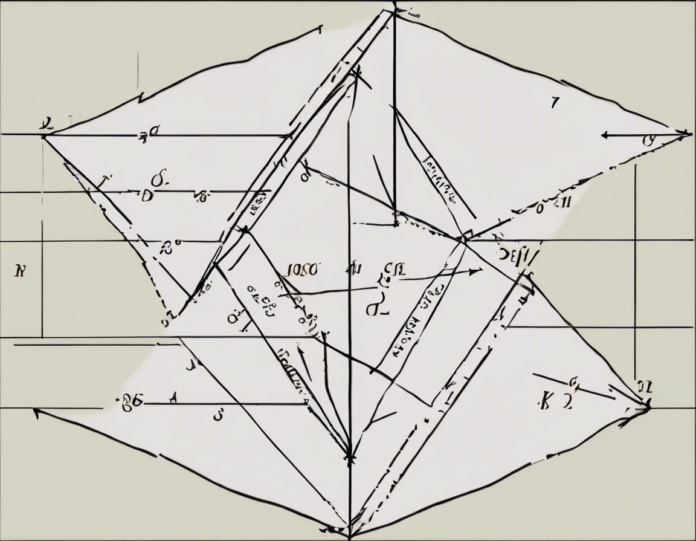Introduction
A rhombus is a type of quadrilateral with all four sides of equal length. It can also be classified as a parallelogram due to its opposite sides being parallel. One of the fundamental properties of a rhombus is that its diagonals bisect each other at perpendicular angles, forming four right-angled triangles within the shape. Calculating the area of a rhombus involves using this geometrical information to derive a formula that simplifies the process.
Understanding the Formula
The formula to find the area of a rhombus is straightforward and can be derived in multiple ways, with the most common approach involving the use of diagonals. Let’s consider a rhombus with diagonals d1 and d2. The area A can be calculated using the following formula:
[ A = \frac{d1 \times d2}{2} ]
Here, the diagonals represent the length of the line segment that connects opposite vertices of the rhombus. By multiplying the length of the diagonals and dividing by 2, we can obtain the area of the rhombus.
Step-by-Step Calculation
-
Measure the Diagonals: The first step is to accurately measure the length of both diagonals of the rhombus. Ensure the measurements are taken from the opposite vertices to maintain accuracy.
-
Multiply the Diagonals: Once you have the lengths of both diagonals (d1 and d2), simply multiply them together.
-
Divide by 2: Finally, divide the result by 2 to obtain the area of the rhombus.
Example Calculation
Let’s consider a rhombus with diagonals of length 8 units and 10 units.
[ A = \frac{8 \times 10}{2} ]
[ A = \frac{80}{2} ]
[ A = 40 \, \text{sq units} ]
Therefore, the area of the rhombus is 40 square units.
Properties of a Rhombus
- All sides are equal in length
- Opposite angles are equal
- Diagonals bisect each other at right angles
- Sum of interior angles is always 360 degrees
FAQs
1. Can a rhombus have a right angle?
Yes, a rhombus can have a right angle as long as all four sides are of equal length.
2. Is a square considered a type of rhombus?
Yes, a square is a special type of rhombus where all angles are right angles.
3. How do you find the length of the diagonals of a rhombus?
To find the length of the diagonals, you can use the Pythagorean theorem in combination with the side lengths of the rhombus.
4. Can you calculate the area of a rhombus if only one diagonal is given?
Yes, if one diagonal is provided, you can use trigonometric relationships within the rhombus to find the other diagonal. Once both diagonals are known, the area formula can be applied.
5. Are the diagonals of a rhombus always perpendicular?
Yes, the diagonals of a rhombus are always perpendicular to each other, which is a distinct property of this geometric shape.
6. How to distinguish between a rhombus and a kite?
While both rhombuses and kites are quadrilaterals, a rhombus has all sides of equal length, whereas a kite has two pairs of adjacent sides that are equal in length.
7. Can the area of a rhombus be negative?
No, the area of a rhombus, being a measure of space, cannot have a negative value since it represents the extent of the two-dimensional shape.
8. Is the perimeter of a rhombus relevant to calculating its area?
The perimeter of a rhombus does not directly contribute to the calculation of its area. However, knowledge of the perimeter might aid in verifying the accuracy of the dimensions used in the area calculation.
9. Are all rectangles considered rhombuses?
No, not all rectangles are rhombuses. While a rectangle has four right angles, a rhombus has all sides equal in length.
10. Can a rhombus be a parallelogram?
Yes, a rhombus is a type of parallelogram due to its opposite sides being parallel. However, not all parallelograms are rhombuses as the latter have additional constraints of having all sides equal in length.
In conclusion, understanding the properties and formula for finding the area of a rhombus can simplify geometric calculations involving this quadrilateral shape. By following the step-by-step process and utilizing the provided formula, you can confidently determine the area of any rhombus, making mathematical tasks involving this shape more manageable.















